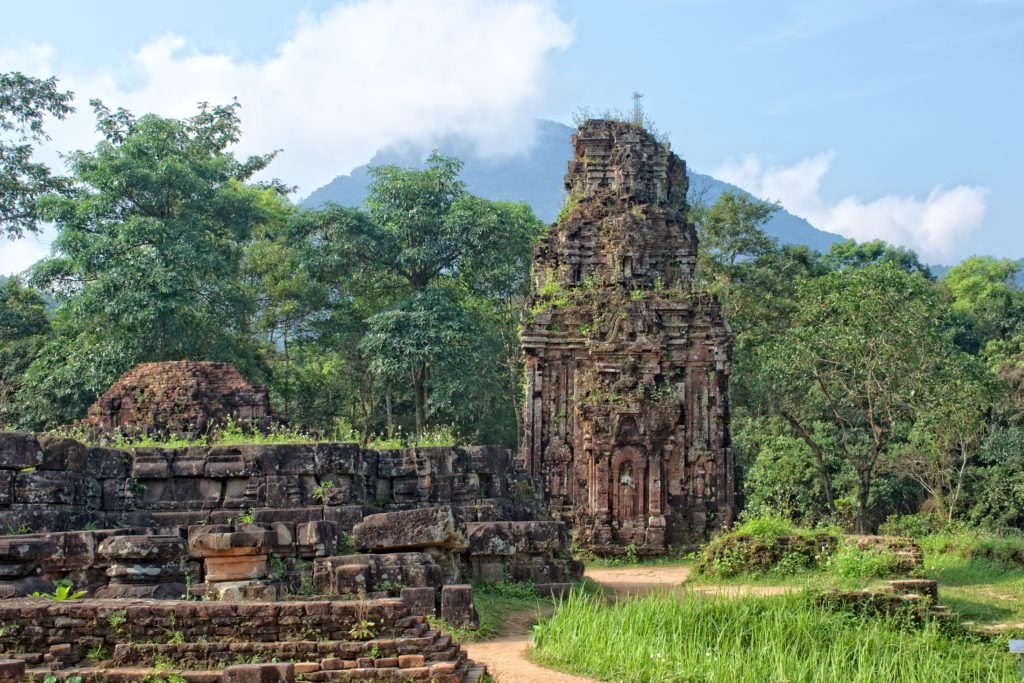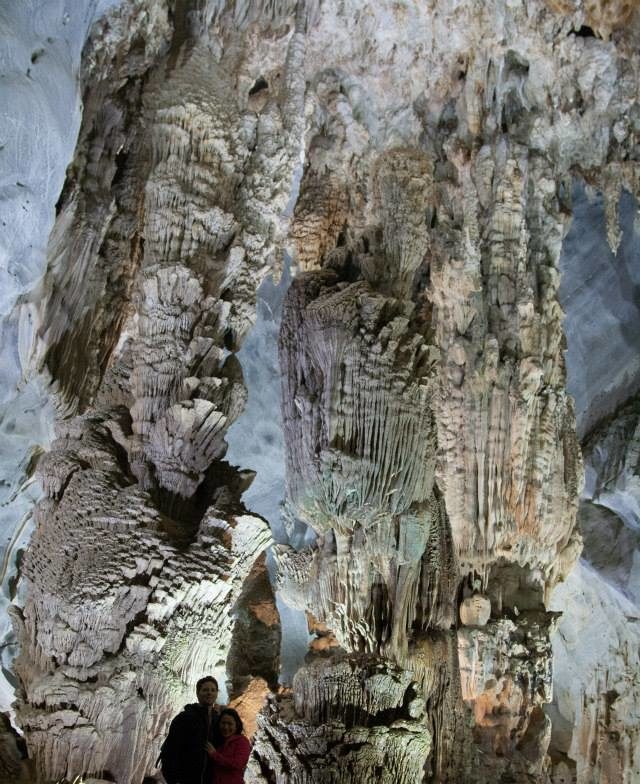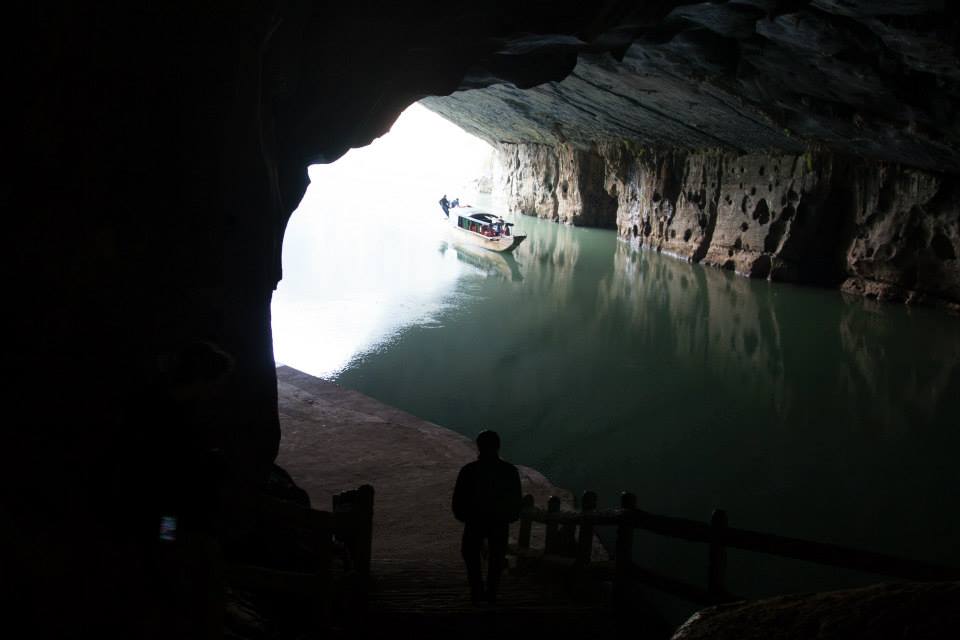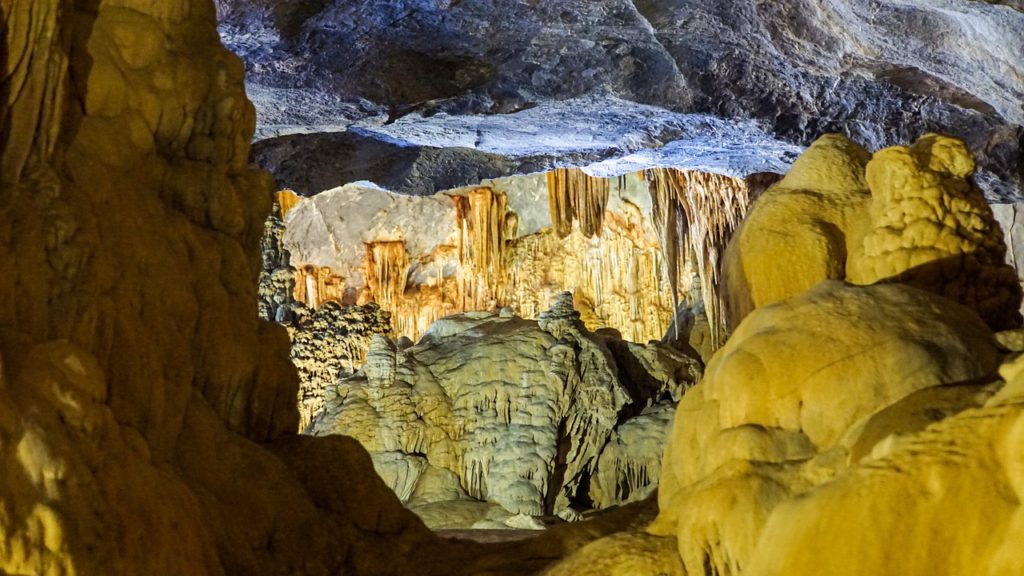More to see in the Central of Vietnam Posted by Kandle Dart on Jun 28, 2021 in Culture, History, Travel, Vocabulary
In the previous blog post, I took you briefly to visit Hue and Hoi An, the two well known locations for tourists worth exploring. Continuing on the tour of central Vietnam, don’t miss the chance to see two more UNESCO Di sản thế giới (Word Heritage) sites: Thánh địa Mỹ Sơn (My Son Sanctuary) and Vườn quốc gia Phong Nha – Kẻ Bàng (Phong Nha-Ke Bang National Park). Save the best for last. Among all eight UNESCO world heritage sites in Vietnam, in my opinion, these two sites are the must to see if you plan to visit Vietnam. You’ll know why I said that after finishing reading my blog. Let me know if you agree with me by leaving comments below.
1. Thánh địa Mỹ Sơn (My Son Sanctuary)
Thánh địa Mỹ Sơn was recognized as a UNESCO cultural heritage site in 1999. It is is in Quang Nam province, just over an hour drive by car from Hoi An old town. What made this site very interesting is that it is completely different than any other UNESCO cultural site you have seen in the north or in the central. You would have thought you are in a different country with different culture and beliefs. While Buddhism is a major religion in Vietnam and once was the national religion in the past, with many existing pagodas throughout the country, what you find in Thánh địa Mỹ Sơn is a series of ancient Hindu temples. You are not wrong to feel that you are in a different part of the world, not in Vietnam. That was because this part belonged to Champa, a country that had been wiped out by the Vietnamese by the 14th century.
At Thánh địa Mỹ Sơn, you will find monuments and artifacts dating from the 1st century to the 14th century. The sanctuary was probably built between the 4th and 13th centuries. Built by the Cham people over a span of ten centuries, the architecture of the temples is remarkable and unique. According to the text from the unesco.org website, “the monuments are unique and without equal in Southeast Asia”. To date, most are ruins, but a few remain intact.
To me, what made it interesting is the technique that the Cham people used to build their temples. How did they stack bricks or sandstones on top of each other to build the temples or towers without using any mortar or binder? You tell me. When I was there for a visit, the tour guide showed me how to differentiate between the original section and the restored part. If you see the brick color is faded and has moss on it, it’s a restoration. The original would have brighter colors and no moss growing between layers. According to the tour guide, the ancient Cham probably used some kind of sap from the tree to bind the bricks together, thus there was no gap between, so moss doesn’t grow on it.
Have you heard about the sacred icons “Linga” and “Yoni”? I don’t know much about Hinduism so I better let you “google” or “Wiki” it, instead of reading my explanation. You will find a lot of these relics on the site.

My Son Sanctuary – Photo by Steve Douglas on Unsplash
2. Vườn quốc gia Phong Nha – Kẻ Bàng (Phong Nha-Ke Bang National Park).
UNESCO recognized this site as a world natural heritage site in 2003. This vưởn quốc gia (national park) is huge and has a shared border with the Peoples Democratic Republic of Laos. What I love about this park is that it has everything you can think of to enjoy: a lush green forest, the mountains, a river, hiking trails, and beautiful caves.
This vưởn quốc gia is in Quang Binh province, far from all other popular tourist sites. Therefore, it’s a bit inconvenient to visit. However, it’s worth it to make a trip here. Make sure to see động (cave) Phong Nha. I have seen lots of different động in both the United States and in Vietnam, but this is my favorite one because it’s a mountain river cave and it’s large.
Do you know where the world’s largest cave is? It’s the Son Doong cave in this park! Well, it’s very expensive and there is a long waiting list to get into this cave. Good luck if you try to do it.

Phong Nha Cave – Photo taken and used with permission from Kandle Dart

River to Phong Nha Cave – Photo taken and used with permission from Kandle Dart

Build vocabulary, practice pronunciation, and more with Transparent Language Online. Available anytime, anywhere, on any device.




